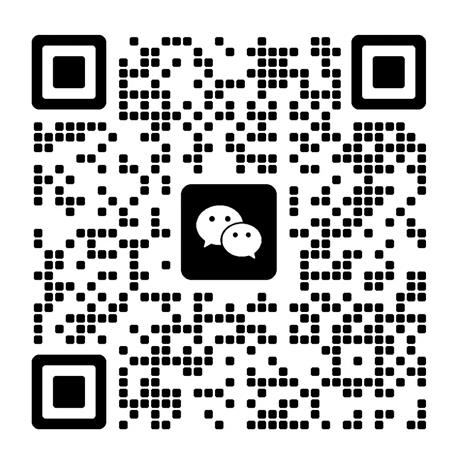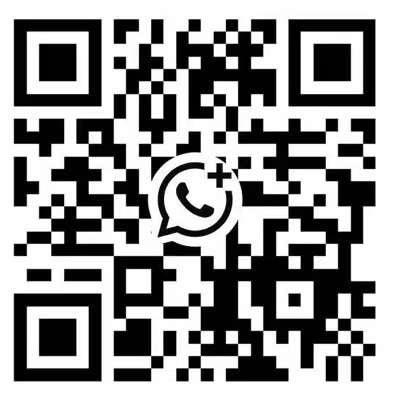In “Mastering Toggle Switch Wiring: A Comprehensive Guide,” we delve into the intricacies of wiring diverse toggle switches. From basic two-pin to complex eight-pin buttons, this guide elucidates how to proficiently control multiple devices, highlighting the impact of various wiring combinations. Ideal for those striving to enhance their technical understanding, this guide transforms intricate concepts into manageable tasks, empowering the confident handling of toggle switches for effective service delivery.
Mastering Toggle Switch Wiring: A Comprehensive Guide
- Toggle switches can be wired in different ways for different operations.
- There are various types of toggle switches, such as two-pin, three-pin, five-pin, and eight-pin switches.
- Understanding the distinct functions of different toggle switches is crucial for adequate wiring.
- Common mistakes when wiring toggle switches include incorrect connections and overlooking polarity.
- Proper two-pin toggle switch troubleshooting is essential for avoiding switch malfunction.
- Wiring a three-pin toggle switch involves connecting the power source to the center terminal and devices to the other two terminals.
- Troubleshooting common issues with three-pin toggle switches includes checking connections and continuity.
- Five-pin toggle switches offer more control over multiple devices or functions.
- Troubleshooting five-pin toggle switch wiring involves checking connections, polarity, and switch suitability.
- Eight-pin toggle switches allow for efficient control of multiple devices and have various applications.
- Safety precautions should be taken when wiring toggle switches, such as disconnecting power and using protective gear.
- Essential tools for wiring toggle switches include a wire stripper, screwdriver, multimeter, soldering iron, and safety equipment.
- Toggle switches can control more than two devices or lights with the correct wiring combinations.
- Troubleshooting toggle switch wiring issues involves examining the switch lifespan, inspecting wiring materials, and testing continuity and voltage.
- Common mistakes to avoid when wiring toggle switches include polarity confusion and incorrect wire sizing.
Key Takeaways
- Toggle switches can be wired in different ways for different operations.
- There are various types of toggle switches, such as two-pin, three-pin, five-pin, and eight-pin switches.
- The wiring process for each type of toggle switch is covered in videos.
- The videos aim to provide detailed instructions on wiring toggle switches.
Section 1: Understanding Toggle Switch Basics
To understand toggle switch wiring comprehensively, it is imperative first to grasp the basic principles that govern these ubiquitous devices. Toggle switches come in various types, each with distinct functions. Two-pin switches, for instance, offer simple on-off operations, while more complex types like the five-pin or eight-pin switches provide additional control options for multiple devices. Understanding the distinct functions of different toggle switches paves the way for effective and efficient wiring. However, mistakes such as incorrect connections or overlooking the polarity can lead to malfunctioning switches or damaged devices. Therefore, vigilance and precision are necessary when wiring toggle switches, ensuring that the desired operation is achieved and potential problems are preempted.
Section 2: Wiring a Two-Pin Toggle Switch
While understanding the principles of toggle switches is crucial, knowing how to wire a two-pin switch is equally essential. This fundamental type offers simple on-off operations. This process involves connecting one wire to each pin, one from the power source and the other to the device you wish to control. The common mistakes in two-pin toggle wiring often involve improper connections, leading to switch malfunction. Therefore, proper two-pin switch troubleshooting is essential. Always ensure the wires are firmly connected to the pins and the power adequately flows. Also, use a multimeter to verify continuity. You can avoid common pitfalls by mastering these steps and successfully wiring a two-pin toggle switch.
Section 3: Two-Pin Switch Practical Applications
In various electronic devices, a two-pin toggle switch is vital for controlling power supply and device operations. These switches are found in lamps, small appliances, and even vehicles. Yet, incorrect wiring can lead to device malfunction. Common mistakes when wiring a two-pin toggle switch include misconnecting the load and line wires and neglecting the grounding. For seamless operations, understanding the two-pin switch troubleshooting tips is crucial. These include checking for loose connections, testing the switch with a multimeter to detect any electrical discontinuity, and replacing the button when it fails to retain its ‘on’ or ‘off’ state. Mastery of these applications enhances operational efficiency and device longevity.
Section 4: Steps to Wire a Three-Pin Switch
Understanding the process of wiring a three-pin toggle switch is essential for those seeking to control multiple devices or functions with a single button. The first step is identifying the terminals: the center terminal is the power input, while the other two are power outputs. Common wiring mistakes when using a three-pin switch include reverse wiring or incorrect terminal identification, leading to malfunction. Remember to connect the power source to the center terminal and the devices to the other two. Ensure all connections are secure and insulated to prevent short circuits. Troubleshooting common issues with three-pin toggle switches often involves checking these connections and the continuity of the button using a multimeter. Mastering this technique is practical, serving individual and community needs.
Section 5: Advanced Three-Pin Toggle Usage
Building upon the standard wiring techniques of a three-pin toggle switch, the advanced usage involves manipulating these configurations to achieve more complex functions. One can control multiple devices or generate distinct operational modes by varying wire connections. This requires a good understanding of circuit diagrams and potential voltage paths.
Problems can arise, thus necessitating three-pin switch troubleshooting. This involves checking each connection for loose wires or shorts and ensuring the switch receives power.
Intricate functionalities can also be achieved using advanced five-pin toggle techniques. This extends the three-pin method by adding two more connections, allowing for additional device control. With careful planning and precise wiring, these switches can be used optimally in complex scenarios, adding value to your service delivery.
Section 6: Wiring a Five-Pin Toggle Switch
Transitioning from the three-pin setup, a five-pin toggle switch introduces two additional connections, enabling more complex control over multiple devices or functions. Exploring different wiring configurations for five-pin toggle switches reveals that they typically include two ‘on’ pins, two ‘output’ pins, and one ‘ground’ pin. Depending on your needs, these switches can be configured to control multiple devices independently or collectively. However, it’s not uncommon to encounter issues during the setup process. Troubleshooting common problems with five-pin toggle switches often involves checking the integrity of the wiring connections, ensuring correct polarity, and verifying the suitability of the button for the intended application. A detailed understanding of the switch’s wiring diagram and function is essential for efficient troubleshooting and successful operation.
Section 7: Five-Pin Switch in Real-World Scenarios
In practical applications, a five-pin toggle switch can offer versatile control over multiple devices, making it a valuable component in various electrical systems. The real-world usage of a five-pin button can be seen in:
- Home automation systems:
- Different combinations of five-pin switch wiring allow for controlling lights and devices, enhancing smart homes’ functionality.
- Industrial control panels:
- Troubleshooting common issues with five-pin toggle switch wiring ensures the smooth operation of heavy machinery.
These scenarios illustrate how a five-pin switch can be wired to control multiple devices in distinct ways. With a comprehensive understanding of wiring techniques, professionals can serve their clients more effectively, ensuring optimal performance of the electrical systems they manage.
Section 8: The Complex Eight-Pin Toggle Wiring
Delving into the intricacies of eight-pin toggle switch wiring, it’s essential to comprehend its complex structure for efficient control of multiple devices. These switches provide flexibility in routing power and signal paths, making them versatile for various applications. However, troubleshooting common issues in eight-pin toggle switch wiring can be challenging due to their complex nature.
| Challenges in Wiring | Possible Solutions |
|---|---|
| Incorrect wiring | Double-check connections |
| Short circuits | Isolate and test components |
| Inconsistent performance | Check for loose connections |
| Switch doesn’t toggle | Replace the switch |
| Can’t control multiple devices | Ensure appropriate wiring |
Exploring creative uses for eight-pin toggle switches can include applications in advanced home automation systems, complex automotive systems, or intricate electronic devices. Understanding this complexity engenders improved service to others in their technical needs.
Section 9: Frequently Asked Questions
9.1: What Safety Precautions Should Be Taken When Wiring a Toggle Switch?
When wiring a toggle switch, safety precautions are crucial. Firstly, ensure switch disassembly is done with a disconnected power source to avoid possible electric shocks. Utilizing protective gear such as insulated gloves and safety eyewear can prevent potential injuries. Always follow detailed instructions for wiring to avoid incorrect connections that may result in short circuits or device malfunction. It’s also recommended to double-check all links before restoring power. Serving others with these practices ensures their safety and the toggle switch’s proper function.
9.2: Are Any Specific Tools Needed for Wiring Different Types of Toggle Switches?
Specific tools are essential for precision and safety in wiring toggle switch varieties. A wire stripper is required to remove insulation from wires, while a screwdriver assists in securing wire connections. Digital multimeters help verify electrical continuity. Soldering iron and heat shrink tubing can ensure robust, insulated connections. Furthermore, safety equipment such as gloves and safety glasses are crucial to protect against potential electrical hazards. These tools enable the practical application of wiring techniques.
9.3: Can a Toggle Switch Control More Than Two Devices or Lights?
Toggle switch versatility allows for control of multiple devices or lights. Multifunction switches, such as five-pin or eight-pin toggle switches, can manage more than two operations. By varying the wiring combinations, you can dictate which devices are activated. This technology enables various applications in service-oriented fields, simultaneously ensuring precise control for multiple devices. However, the complexity increases with the number of devices controlled, thus requiring a comprehensive understanding of toggle switch wiring.
9.4: How Can I Troubleshoot Issues With My Toggle Switch Wiring?
Troubleshooting toggle switch wiring issues involves several steps. First, examine the switch lifespan, as the case may be due to worn-out components. Next, inspect the wiring materials for any visible damage or improper connections that could disrupt the circuit. Use a multimeter to test the continuity and voltage. If these steps don’t resolve the issue, consult a professional. Safety should always be your top priority when dealing with electrical systems.
9.5: What Common Mistakes to Avoid When Wiring a Toggle Switch?
Common toggle switch mistakes include wiring polarity confusion and incorrect wire sizing. Misunderstanding the switch’s polarity can result in faulty connections, potentially leading to circuit failure. Similarly, using a wire size unsuitable for the current can cause overheating and damage. Always ensure correct polarity identification and appropriate wire gauge selection to maintain safety and equipment performance. These precautions will contribute to effective service and problem prevention.
Section 10: Conclusion
This comprehensive guide has demystified the complexities of toggle switch wiring, covering a broad spectrum from two-pin to eight-pin switches. It has elucidated each type’s operational intricacies and practical applications, enhancing understanding and competency in electrical circuitry. The guide has successfully transformed complex wiring tasks into manageable procedures, reinforcing the essential role of toggle switches in controlling multiple devices and lights. Therefore, mastering toggle switch wiring is pivotal for efficient electrical circuit management.


